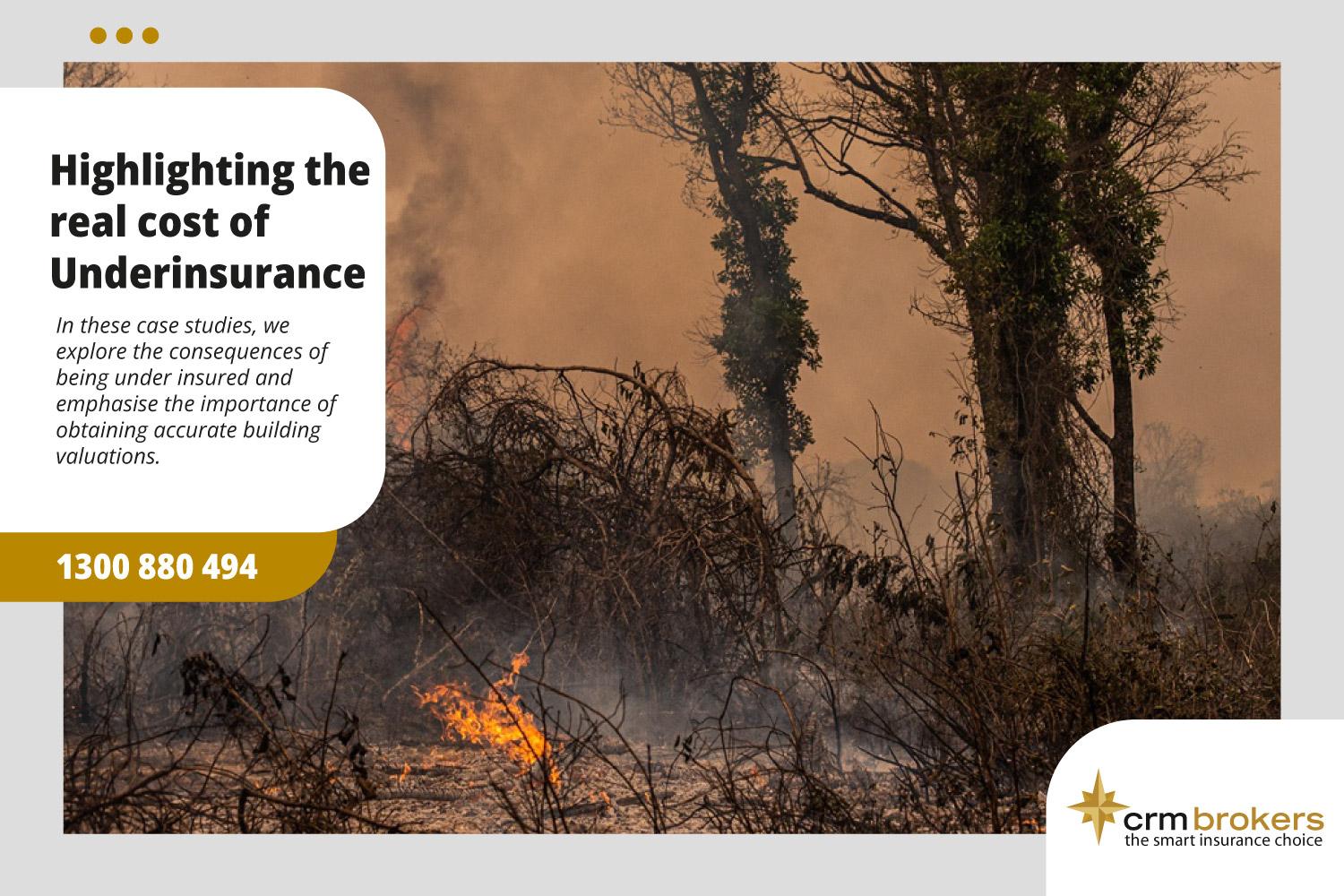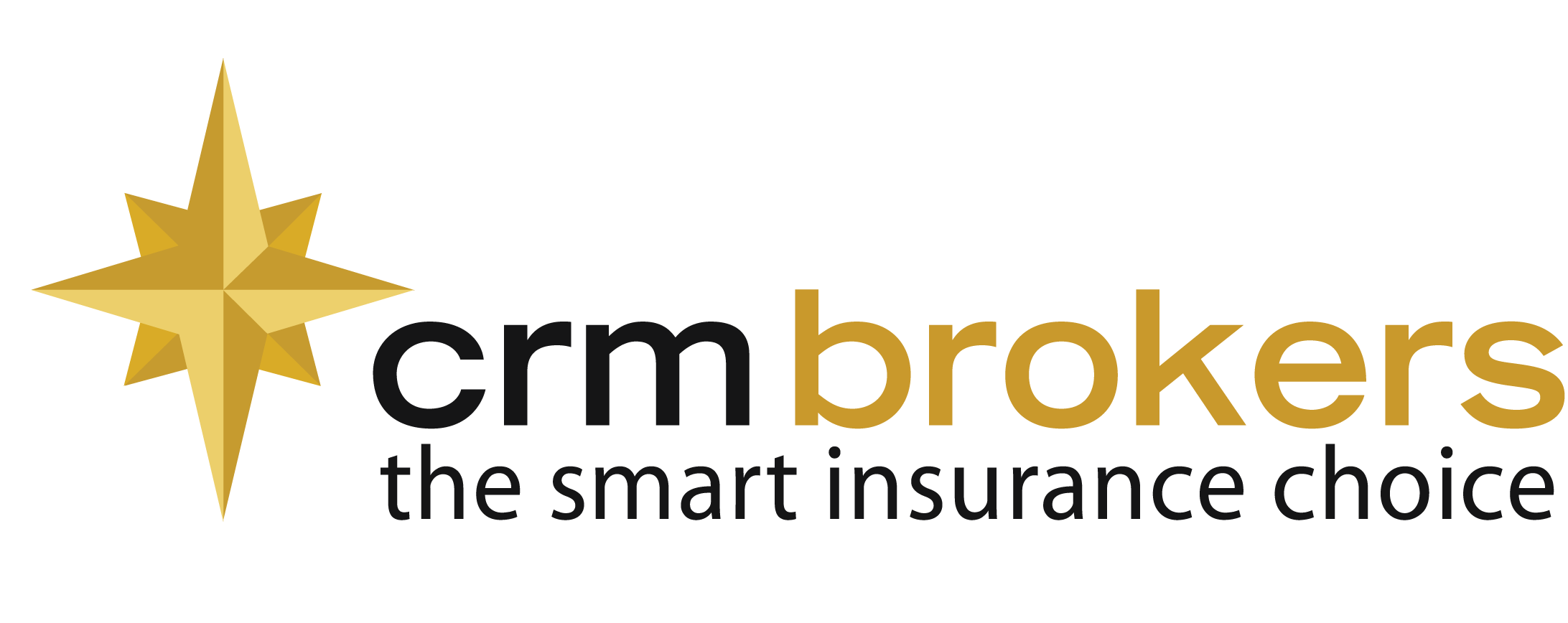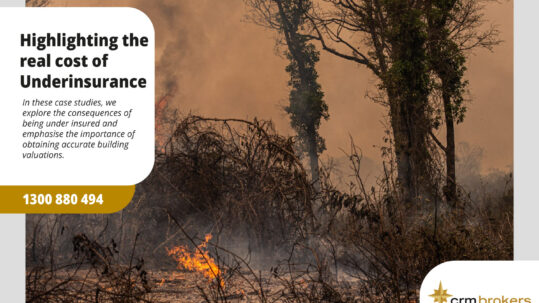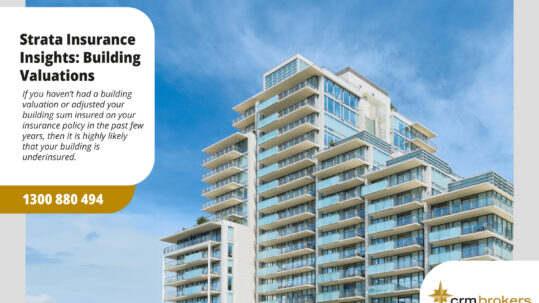
11 Apr Strata Insurance Insights: The Real Cost of Underinsurance
Simply put, underinsurance occurs when the sums insured are not sufficient to cover property in the event of a loss. In our previous article we addressed the importance of obtaining an accurate building valuation to ensure that the insurance coverage aligns with the actual rebuilding or repair costs, particularly in light of the recent increases in construction costs.
Insufficient building sums insured occur when regular professional valuations are not conducted on a property or when policyholders don’t review sums insured in their policies at renewal time. In the following case studies, we explore the consequence of being under insured and emphasise the importance of obtaining accurate building valuations.
Case Studies – the real cost of Underinsurance
Scenario 1: Partial Fire Damage
A fire that ripped through an industrial strata complex, left damage to 40% of the units. The building sum insured was $20 million, however despite less than half of the complex being damaged, the actual rebuild cost came to over $25 million. The owners were significantly out of pocket as rebuild factored in costs such as removal of debris (which can be large at an industrial complex), remediation of the site and fire safety upgrades.
The important take away here is to have regular professional valuations that will reflect the current replacement cost and consider factors that drive up labour and building material costs.
Scenario 2: Bushfire Devastation
A catastrophic bushfire destroyed most of a residential strata property. The building sum insured was $10.5 million. The cost just to “make safe” the remaining properties and remove the debris from the site came to $1M and the final rebuild for $11 million.
In a catastrophe scenario, underinsurance is further exacerbated by:
- The time it takes for special levies to be raised
- Delays in the approval process through councils
- The increased demand for trades and materials will result in an escalation of rebuilding and replacement costs
An important consideration for strata insurance is related to the optional catastrophe cover. Catastrophe cover provides additional limits when the original sum is exhausted, due to the increased costs after a declared Catastrophe. We recommend referring to your policy wording to understand what your insurer defines as a Catastrophe. This cover also includes extra coverage for Loss of Rent and Temporary Accommodation. Most strata underwriters offer Catastrophe cover as an option that must be selected before it can apply.
Scenario 3: The importance of acting on a valuation
A Strata Plan suffered a fire in one of the industrial units at the complex, resulting in significant damage to that unit. Through the course of the insurance claim, it was discovered that a valuation had been completed a while before the loss, with a recommendation to increase the building sum insured by over 70%. However, the sum insured on the policy was not increased at that point in time. The loss to the one unit almost exhausted the original building sum insured and, had there been more extensive damage, the insured would have been out of pocket. Following the loss, the Strata Plan had their building sum increased as per the recommendation of the valuation report.
Key Takeaway – Act on a valuation as soon as it is received by notifying the Insurer. This may mean paying an additional premium increase in insurance coverage. However, that’s a far better outcome than potentially having to pay the difference of a total loss if your strata plan is underinsured.
How Regular Valuations Prevent Underinsurance
Regular professional valuations ensure your building sum insured accurately reflects your building’s replacement value. This allows for factors like removal of debris, professional fees, building material costs, and even potential future cost increases.
Do you want more information on how to go about arranging a valuation?
Strata Community Insurance have prepared a Standard Operating Procedure on Valuations (NSW) document which has been designed to assist owners make more informed decisions about engaging a valuer, including points to consider in scoping out what is required of the valuer to ensure buildings are insured accurately.
CRM Brokers strongly recommend strata managers and owners corporations be proactive in addressing the risks associated with underinsurance. If you have a property that you are concerned may be underinsured, please contact CRM Brokers on 1300 880 494 (Option 2 for the Strata Team) to discuss obtaining a valuation.
Stay Informed – Connect with us on LinkedIn
Important Notice
Disclaimer: Terms, conditions, limits, deductibles and exclusions apply to the products referred to above. Any advice in this article is general advice only and has been prepared without taking into account your objectives, financial situation or needs. Before making a decision to acquire any product(s) or to continue to hold any product, we recommend that you consider whether it is appropriate for your circumstances and read the relevant Product Disclosure Statement (‘PDS’), Financial Services Guide (‘FSG’) and the Target Market Determination (‘TMD’) which can be obtained by contacting CRM Brokers.
Information is current as at the date the article is written as specified within it but is subject to change. CRM Brokers make no representation as to the accuracy or completeness of the information. Various third parties have contributed to the production of this content. All information is subject to copyright and may not be reproduced without the prior written consent of CRM Brokers.
Strata Insurance Insights: The Real Cost of Underinsurance
Simply put, underinsurance occurs when the sums insured are not sufficient to co...
11 April, 2024Strata Insurance Insights: Building Valuations
While securing appropriate insurance coverage is fundamental for strata property...
14 March, 2024The Alarming Rise of Business Email Compromise and the Vital Role of Cyber Insurance
In today’s rapidly evolving cyber threat landscape, cybercriminals are con...
27 February, 2024Navigating High-Risk Tenancies and Property Insurance
When it comes to insuring properties with commercial tenants, regardless of whet...
13 February, 2024





